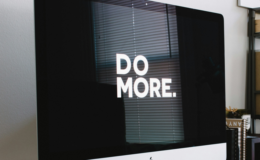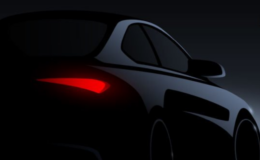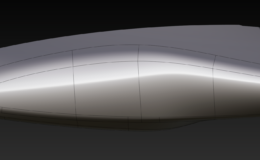A lot of people are aware that the road to becoming an Automotive Digital Modeler usually starts at a transportation collage of their choice, where they master curricular subjects, which then open the road to their ideal career.
What they might not know is that when at college their focused-on career path only begins to shape up, and that they just ‘scratch the surface’ of Digital Modeling Realm. After graduation, polishing and complimenting of skills shortages in their first jobs is a natural process. Gaining ‘real-job’ knowledge will take some time, and maybe even will require some ‘ego grinding’. Quite uplifting is the fact that with every project along the way, this shortage will gradually level out, end eventually disappear.
It is crucial to maintain enthusiasm throughout your Digital Modeler Career. In particular though, it is indispensable to keep your motivation up at initial stages, where some might simply just give up. As soon as you enter gates of the company you secured your internship or a graduate job with, try to find a sense of achievement in every task that will be thrown at you. You are on the steep learning curve, and it is alright to make mistakes or simply do not know solutions to the problems.
By now, you might have searched through the entire Internet, and collected all available learning resources on automotive digital modeling and beyond. Here though, you can go a step further and find extra knowledge on what you can expect in professional environment, when you finally land the automotive modeling job.
| 1 | No Credit for Design |
| 2 | Pack Up Your Belongings! This Project Is Canceled! |
| 3 | You Are The Missing Link Between Designers and Engineers |
| 4 | Adopt Various Modeling Strategies for Different Stages of Design |
| 5 | Understand What Designer Had in Mind |
| 6 | First to Come, Last to Leave |
| 7 | Affect Your Health – Both Mental and Physical |
| 8 | Good Digital Model – Bad Design |
| 9 | Will You Burn Out? |
| 10 | Is This What You Really Wanted? |
| 11 | Every Nation, Every Working Etiquette |
| 12 | Keeping the Ball Rolling |
No Credit for Design
Let’s begin right off the bat. Have you ever heard a saying: “Heroes behind the scenes”? You are one of them. You, as a digital modeler, don’t get official credit for completed projects. What you might get, though, is a pat at your back, a monetary bonus, more upcoming work, and a group of friends at your office, who largely appreciate your exceptional work, and hope to rely on your skills for future projects. At most, you can pin pictures of your models to your bedroom wall and tell your grandchildren about the nuances of the projects from way back when.

Pack Up Your Belongings! This Project Is Canceled!
Before you get excited just hold your horses! Sometimes projects get scrapped in various stages of progression. This could be due to financial restrictions, poor project development, management shuffles etc. It is vital to stay mentally prepared and ready to step back in case it happens. This might sound like a worst nightmare for people who have committed to arranging their lives around the job. Make sure you have other options available that can be secured relatively quickly, therefore it’s quite important to build an honest and genuine network of connections. Platforms like: LinkedIn can help in keeping you up to date with your colleagues and peers to notify you of upcoming job opportunities.
You Are The Missing Link Between Designers and Engineers
Your role, at any particular moment, depends on what you are aiming to achieve in terms of digital results, which depends on what phase the project is in. At the beginning, you will become designer to deal with the CAS (Computer Aided Styling) modeling to better sculpt visually appealing forms. In this stage you should “turn off” your analytical mind set and focus on styling only. You might want to keep at the back of your head what you heard from engineers, but still push the limits of creativity.
- Create problems for engineering department to solve
- Don’t get persuaded easily, ask questions, challenge
- Don’t pretend to understand everything, 3D create, prove then evaluate
- Push the limits for better visual results
At later stages of projects, when CAS surfaces are remodeled to satisfy standards of A-Class topology, your role will gear more towards an engineering set-up.
- Strive to achieve required draft angles
- Create consistent gap values between panels
- Offset surfaces to achieve required flash conditions
- Rebuild surfaces around panel splits for better match-up
Adopt Various Modeling Strategies for Different Stages of Design
Take a modeling attitudes that will be suitable for the current project stage. If you always want to make your models perfect, you might not be able to meet design reviews deadlines. It might be alright to miss out on continuities in some areas, or to have some work-in-progress data sets with visible imperfections, especially when there wasn’t enough time to seal everything off. Work smart and judge which design portion of your model is good, and can be solidified, and which areas need more work, and don’t need refining as yet.
Consider:
- What phase of the project am You are in?
- What quality surfaces should I produce at this given moment?
- How much time I have to produce them?
- Do I consider this design attractive?
Understand What Designer Had in Mind
A well-proportioned, 2D sketch can stand for thousands of words. However, no matter how realistic-looking the sketch might be, there is always a degree of imaginary freedom to it. In some cases, proportions might be slightly off, wheels might be oversized, highlights might be exaggerated, and worst of all, different views might not match up, and show different design ideas. Working with a designer who is not afraid to admit limits to his sketches is a blessing. He would be very keen on providing you with tones of additional thumbnail sketches that will actually lead you to the intended design. He will also listen to your opinions, as long as they are backed up by your digital model, which should demonstrate where designer lost you, and in fact, where designer lost himself. Asking for section drawings also shouldn’t be a problem, as long as they fall under designer’s responsibilities, and not, let say, aerodynamics department’s responsibilities.
First to Come, Last to Leave
You should be prepared to work long hours, especially towards the end of projects. Also, if you are exceptionally good, you will be in constant demand. It means: more money, more prestige, but also more taxes to pay and very little of private life and less freedom. The long working hours are the main reason why you should fall in love with your job. Otherwise, how would you be able to stay a third of your life time doing something that doesn’t rally “float your boat”? Overtime means extra income. However, get ready to give away a big portion of your money to the tax office. Remember that the more you work, the more taxes will be deducted off (https://www.taxpolicycenter.org/briefing-book/how-do-federal-income-tax-rates-work) you.
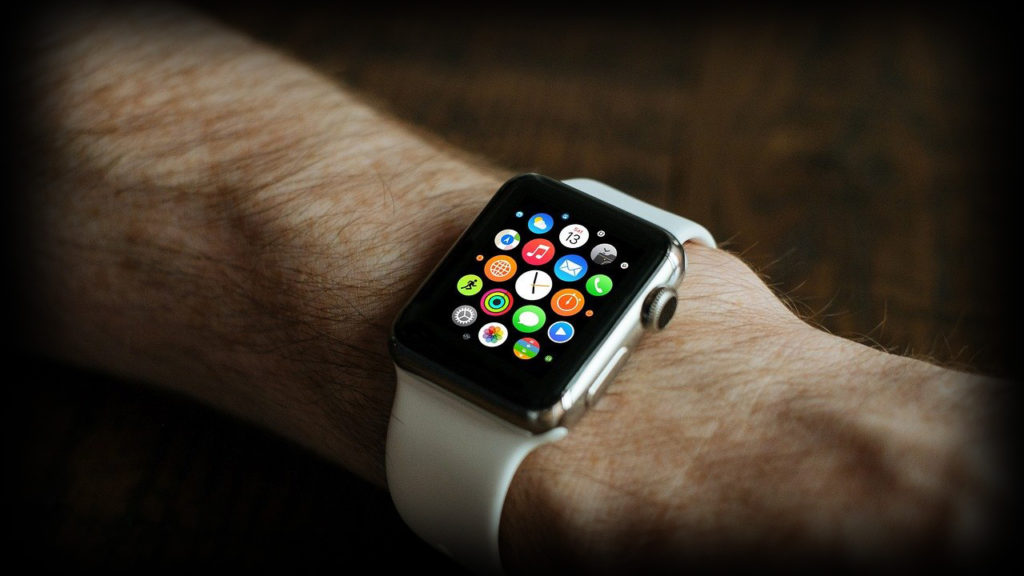
Affect Your Health – Both Mental and Physical
Long, intellectually intensive, sedentary working hours can affect both your mind and body. You should look for hobbies and organize interesting activities after work and during weekends. If you a have family, make sure you spend enough time with them, preferably being physically active and away for the computer screen. Weekends might also be a good opportunity to visit some galleries, design shows, or anything that can boost your productivity without adding strain to your health and family relations.
Good Digital Model – Bad Design
It only takes practice to learn how to achieve good quality surfaces. With the whole rage of tools at your disposal (link to my previous post), achieving good topology gets easier and easier. It got to the point that anybody can perform, for example, surface alignments to achieve G2 or even G3 continuity. On the other hand though, planting attractiveness into your digital model isn’t this easy. It often leads to a situation where the technicality of you 3D design is flawless, but artistic expectations are not met. If this happens to you, you should understand that beauty and technicality don’t go hand in hand. A model that is aesthetically pleasant doesn’t necessarily have to be technically correct and vice versa. It takes a mixture of an artistic eye and analytical mind to achieve both beauty and technicality.
Will You Burn Out?
At certain stages of your career you might reach the point where words like: passion for digital design strays away. This is most likely to happen if you work in environments where you are expected to lead your lifestyle around the job. Young modelers are, more often than not, willing to sacrifice themselves in the name of opportunities that such stringent employers create. You are expected to be at theirs beck and call. Planning ahead of your holiday, evenings out or even some unexpected emergency situations must fall into the background. No human can constantly live around his job, regardless of how exciting the job might possibly. Even if your job constitutes your life, you will quickly realize that having a healthy equilibrium, where you can focus on other stuff will help you achieve even more.
Is This What You Really Wanted?
After some time you might realize that you have been chasing highlights on that hood, making that CV flow more consistent, closing off the model for yet another review for many weeks. Dreams of freedom-creating, cool-looking vehicles were somewhat forgotten, and got relocated to the background. The time has come to ask yourself whether this still makes you happy. Instead, you might want to get involved in some projects of industrial design character, where function takes priority over form. Such projects worship the importance of form sculpture, let you forget about surface technicality and rigorous topology requirements, They are a perfect stepping stone to regaining interest and motivation.

Every Nation, Every Working Etiquette
You are a skilled Digital Modeler. It means that the world is your oyster. The opportunity of working with people of different nationalities itself should be self-explanatory. Every nation works differently, and this is not just a slogan, but a fact. Communication styles, gestures, approaches to problem solving will also differ. It’s important to read between the lines of what has been decided, especially when working with nations that are more contained or timid in expressing opinions. Even seemingly trivial things such as: coffee time concepts, lunch breaks, later afternoon aperitifs differ or don’t exist in various country. You won’t fill up your stomach with an Italian espresso, but instead it won’t let you sleep at night. You would want to stick to drinking tea in the UK, and sparkling mineral water in Germany. In China, you will be offered a plastic cup of hot water during the heat Summer season. These differences are very interesting and after a while you will not only get used to them, but also will be curiously awaiting what certain location and other nationalities people have to offer.
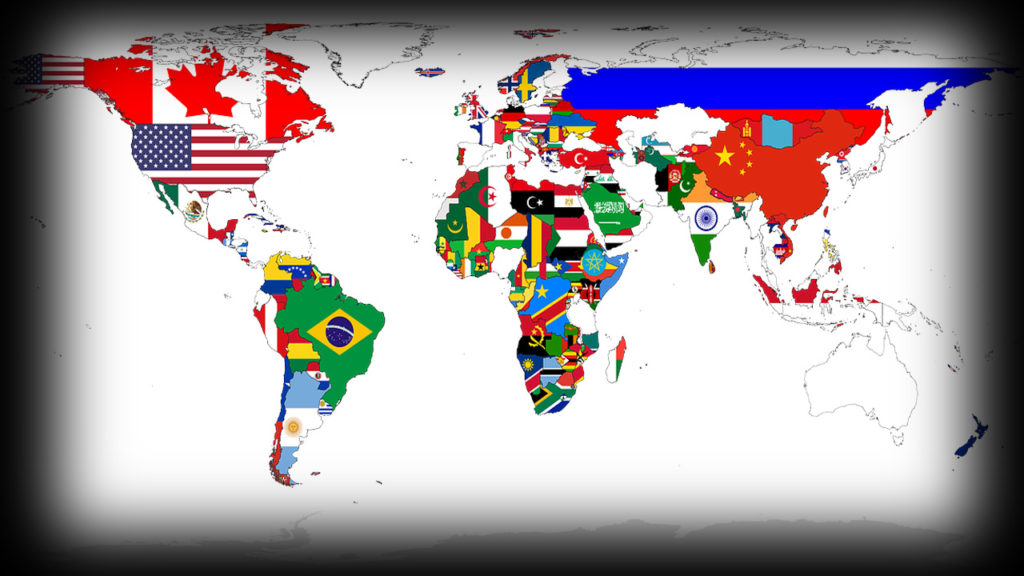
Keeping the Ball Rolling
You must have heard that the big chunk of lottery winners who become millionaire overnight will reach bankruptcy withing next two years.
After some time you will have a couple of good designs in your portfolio, and your experience booklet will get thicker and thicker. You will think you have gone through everything in your career, nothing might be able to spark that light of enthusiasm. You feel job secure, and can finally lay back and relax. Only then will you realize that working at your dream job isn’t as exciting as before. Long office hours and sedentary working style might affect your life. You might go to bed too late because you want to catch up with your life late at night. As a consequence, you have difficulties getting off bed in the morning. Your performance and self-esteem drop.
At this point is it worth to take vacations. Use this opportunity to look back at your achievements and feel proud of them. Stack up the rationality blocks in your head, and remind yourself your desires from a few years ago. Do everything to gain that excitement back in your life.



